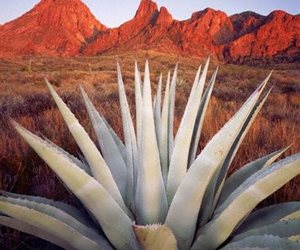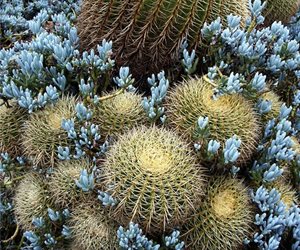Desert Garden Plants
Landscaping plants & irrigation tips for desert climatesWhen people think of the desert they conjure up images of dry stretches of sand dotted with the occasional cactus or Joshua tree. However, if you live in the desert your yard does not have to conform to these images. In fact, with careful preparation and plant selection you can create a garden that is far from barren.
Soil Preparation
The first step to creating a desert garden that contains thriving plant life that is colorful and has visually interesting textures is soil preparation. Generally, desert soil is sandy and coarse; it contains little organic matter and can be very rocky. You will need to perform a soil test in the areas you plan to grow plants. Soil tests can be obtained online or at your local nursery or home and garden store. A soil test will help you determine the nutrients available in your soil. In desert conditions it is likely that you will need to supplement the natural soil with organic material in order to create optimum growing conditions. Based on the results of your soil test, ask your local nursery what supplements they recommend. When preparing your soil, keep in mind that drainage is important. If desert plants receive too much moisture their roots will rot.
Efficient Irrigation
After you have prepared your soil, it is time to move on to irrigation. In the desert, water is a precious commodity, so irrigation needs to be as efficient as possible. The best type of irrigation for desert plants is a drip irrigation system. Drip lines lose little water to evaporation and run-off. While designing your irrigation plan think about grouping plants according to irrigation needs. This process, called zoning, designates areas for plants that will need more water, and areas for plants that will need less water. Zoning reduces wasting water on plants that are hardy and need little or no water to survive in the desert.
Grow Desert Natives
Once you have irrigation in place, you are ready to start the actual planting. Growing native plants is the key to successful desert gardening. Native desert plants are accustomed to the dry, hot climate, making them drought-tolerant, water wise and incredibly low maintenance. You'll be surprised at the amazing variety of desert plants available. On-the-other-hand, the biggest thing to avoid in a desert garden is a lawn because it requires a lot of water. If you need the space for children or pets, consider synthetic grass, which has come a long way in recent years and doesn't require water or cutting.
Succulents
Succulents are the ideal plants for desert gardening. They are water-retaining plants that are suitable for arid climates and soils. Succulents collect and store water to survive long hot, dry periods. There are many varieties of succulents including cacti, agave, yucca, aloe, and sedum. Other plants that are drought tolerant and will provide color are begonia, autumn sage, yellow columbine, Texas red yucca, and bunny ears cactus. Ground covers that are suitable for a desert garden include California fuchsia, and wine cups. Trees that will grow well in the desert are, of course, the palm, and blue palo verde.
To learn more about succulents read this interview with succulent expert Debra Lee Baldwin.
Desert plants can be grown in beds or containers, as long as the drainage is good. When planting, consider that young plants need extra protection from gusty winds because they are in the process of establishing their roots.

 Backyards
Backyards
 Front Yards
Front Yards




